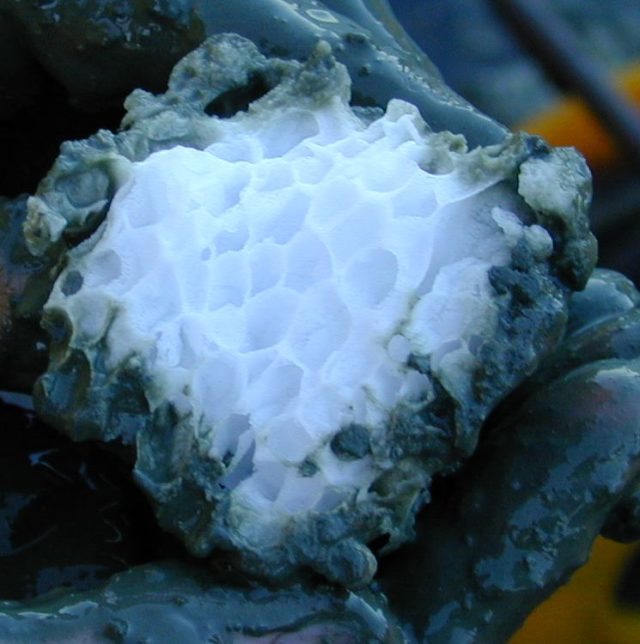New lab could unlock vast potential of seabed methane ice
Ars Technica » Scientific Method 2013-01-25

The University of California, Irvine has been granted $1 million to develop a unique laboratory for the research of clean energy obtained from methane hydrates, an as-yet untapped source of methane gas that exists in huge quantities in some ocean-floor environments.
Methane hydrates are clathrate compounds, where the methane molecules are trapped in a lattice of water ice—hence their alternate names, methane clathrate and methane ice. They occur where methane and water are present at favorable combinations of low temperatures and high pressure. These conditions restrict clathrates to undersea locations at polar latitudes and along continental shelves, where they are distributed within the sedimentary bed.
Such environments are plentiful, of course, and so it's unsurprising that methane hydrate is thought to be abundant on planet Earth. However, as our understanding of methane hydrate formation has grown, our best guess as to the extent of the reserves has become smaller. Currently, the most conservative estimate is that there are between 500 and 2,500 gigatonnes of carbon in submarine gas hydrate deposits, the majority of which are in the form of methane.
Read 9 remaining paragraphs | Comments